NASA / Northrop M2-F3 Experimental Aircraft (USA)
The construction and testing of the M2-F3 machine was carried out as part of a larger research program. Back in the late fifties, American scientists began to study the original concept of the aircraft, called the Lifting body ("Bearing body / fuselage"). She meant the construction of technology with a semi-conical fuselage capable of creating the required lifting force. In the early sixties, several large-scale mockups of such technology were tested, and later a full-sized NASA M2-F1 prototype was built.
In 1964, the program received the full support of the leadership of the Aerospace Administration, as well as the corresponding economic and production opportunities. Soon, NASA, in conjunction with Northrop, developed and built a second prototype glider, called the M2-F2. This machine was built with the experience of testing the previous sample and was intended for further study of existing ideas.
The first flight planning M2-F2 with the launch from the carrier aircraft took place in the summer of 1966. Over the next few months, NASA test pilots completed a dozen missions and studied the existing machine well. 10 May 1967-th held another flight, which ended in an accident. The cause of this incident was the specific behavior of the machine in some modes and the lack of efficiency of the control planes.
Analysis of the test results and the crash investigation allowed NASA specialists to determine the future paths of development of a promising direction. It was found that in the configuration provided by the M2-F2 project, the aircraft does not fully meet the requirements and therefore needs some refinement. Soon it was decided to create a new project, which in fact represents a version of the further development of the existing design.
The broken M2-F2 prototype was delivered to one of NASA's hangars, where a new project was to be repaired and upgraded. Despite a hard landing with several coups, the design did not receive fatal damage and was to be restored. Repair of the existing prototype allowed to significantly save on the construction of a new prototype in a different configuration, as well as to a certain extent speed up the launch of new tests.
Continuing the previously established “traditions” of the name, the new version of the prototype should have received the name M2-F3 - Manned 2, Flight 3 (“Manned 2 model vehicle, flight model No.3”). Also, the name of an aircraft building company that participated in the development of the project and built the device in its original version is often added to this name. In this case, the full name of the project looks like Northrop M2-F3.
To obtain the desired results, the existing aircraft needed certain modifications, but some elements of its design could be left unchanged. As a result, the new M2-F3 looked a lot like the base M2-F2, although it had some noticeable differences. First of all, another tail assembly, which received an extra keel, was thrown into the eyes.
After modernization, the prototype retained the all-metal construction built on the basis of the frame and sheathed with sheet metal. Also in the design of the airframe was attended by several transparent elements. According to reports, in the course of reworking the power set did not undergo significant changes and corresponded to the basic design. The layout also did not change; it provided for the pilot's cockpit to be positioned in the forward part of the carrier fuselage, to install chassis niches in the central volume and to install the auxiliary engine in the tail.
Without significant changes has been preserved unusual shape of the fuselage. Its upper surface was made smooth and smoothly mated with the side sections of the bottom, forming rounded edges. The lower unit of the fuselage differed more complex shape. Because of this, along its entire length, the fuselage had a U-shaped cross section with a pronounced central element in the nose and center. During the first two thirds of the length of the fuselage expanded. Behind the widest and highest section of the structure there was a tapering tail, which ended in a flat inclined part.
In the basic configuration, the Northrop M2-F2 had a pair of trapeziform shaped carinae. These planes were placed on the sides of the fuselage and were distinguished by a large sweep of the leading edge. The large rear part of the keel served as a rudder and air brake. To increase the track stability of the car, the two existing keels were supplemented with a third similar plane. The new keel was placed on the longitudinal axis of the fuselage and differed from the other two in shape and location. The central keel did not have a rudder, and also received a leading edge with a greater sweep.
The design of the control planes remained the same. The upper surface of the fuselage tail received a pair of elevons, in the lowest position lying on it. Another similar plane was on the bottom. Keeley equipped with two rudders, suitable for use as air brakes. To test the new systems proposed for use on advanced spacecraft, a pair of gas rudders were installed in the tail end of the airframe.
The airframe was supposed to retain the existing landing gear, built on the basis of components borrowed from serial aircraft. In the forward part of the fuselage was placed the front desk with two wheels of smaller diameter. With the help of appropriate mechanisms, she turned back and retracted into her niche. In the widest part of the fuselage were the niches of the two main racks. They were completed with larger wheels. Cleaning was done in the fuselage niches by turning towards each other.
The single cockpit, as before, was located in the forward fuselage. From the oncoming flow of the pilot covered a drop-shaped lantern with a large glazed area. Observation of the runway was simplified due to a pair of large glasses in the nose fairing. The cabin was equipped with an ejection seat, the necessary controls and controls. Like the previous experienced airframe, the M2-F3 received an aircraft-type handle and a pair of pedals. The handle was connected with horizontal planes, pedals - with vertical ones.
As part of the modernization project, on-board control systems were seriously reworked. Throughout the tests of the base sample, the pilots complained about the lack of effectiveness of the rudders, located at a small distance from the longitudinal axis of the machine. This problem was partially solved by changing the wiring and design of the rudders.
Like the previous experimental machines, the new aircraft received an auxiliary engine, which is necessary for a sharp increase in speed in certain situations. A four-chamber liquid reaction rocket engine of Reaction Motors XLR-11 3600 kgf was installed in the tail of the fuselage. A small supply of fuel and oxidizer in the tanks allowed the engine to be turned on only for a few seconds and only once to get the desired acceleration. On the sides of the nozzle block of the main engine was placed a pair of nozzles with nozzles of gas rudders, necessary for some studies.
As an experimental model, M2-F3 received a set of recording equipment. Most of the data was collected by regular airframe sensors. In particular, several parameters were determined using an air pressure receiver, carried forward on a long rod.
Despite significant improvements to the airframe and controls, the new experimental aircraft retained the dimensions and weight parameters of the basic configuration. Experienced Northrop M2-F3 had a length of 6,75 m with a maximum width of 2,94 m and a height at the parking lot of 2,89 m. The area of the bearing surface of the fuselage - 14,9 sq.m. The empty car weighed 2,3 T. Normal take-off weight reached 2,72 T, maximum - 3,6 T. According to calculations, the glider could reach speeds of more than 1700 km / h and fly at altitudes more than 21 km. Flight planning range reached 72 km.
The development of a new project, as well as the subsequent repair and modernization of the broken aircraft, took quite a lot of time. Experienced M2-F3 was able to bring to the test only in the spring of the year 1970. It was proposed to fly into the air with the help of a carrier aircraft, rebuilt from a serial bomber B-52. He had to raise the glider to a predetermined height and accelerate it to the required speed. At the same time, as in the case of the previous test program, the tests began with the simple removal of an experienced glider on the external sling, ending with a landing along with the carrier.
2 July 1970 test pilot William Dana for the first time disconnected an experienced glider from the carrier and went into free flight. The flight began at an altitude of 13,7 km and lasted for 3 minutes 38 seconds. In flight, the M2-F3 developed a maximum speed of 755 km / h. Already in the first test flight, it was possible to confirm a noticeable increase in the basic characteristics and improvement of the flight qualities of the prototype. The third keel has a positive effect on road stability, and the upgraded rudders made it possible to easily perform the necessary maneuvers.
At the end of July and the beginning of November, U. Dana completed two more flights, during which the earlier conclusions were fully confirmed. At this stage, there was a proposal to gradually change the basic parameters of the flight and determine the maximum characteristics of the existing machine. So, it was proposed to use the existing fluid engine not only to increase the speed on certain modes, but also as a regular means of acceleration in flight. Thus, an experienced glider was to become a full-fledged rocket glider.
25 November 1970 of the year U. Dana at the height of 15,8 km made a disconnection and soon turned on the engine. The flight lasted more than 6 minutes, and during this time the rocket glider managed to develop the speed of 859 km / h. Subsequently, several more test flights with the engine were performed, and not all of them were successful. The sixth flight, held on 26 on February 1971, did not go according to plan. Of the four engine chambers, only two turned on, which caused the flight to last less than 6 minutes, and the maximum speed did not exceed 820 km / h.
Shortly before this flight, the pilot Jerry Gentry was attracted to the test. Later, John Manke and Cecil Powell began testing the prototype machine. At the same time, the bulk of the flights were performed by W. Dana, who worked within the framework of the M2-F3 project from the very beginning.
25 August 1971-th U. Dana set a couple of records. In the ninth test flight for the first time managed to exceed the speed of sound. The rocket launcher reached 1164 km / h and climbed to 20,5 km altitude. Despite the high speed, the car behaved confidently. After overcoming the sound barrier, the pilot smoothly slowed down and performed the usual landing.
The purpose of further testing was to obtain maximum performance, especially speed. Gradually, the rocket glider showed higher and higher speeds, however, it could not do without those or other problems. So, in the 10 flight of 24 September 1971, the engine ignited. Fortunately, the fire was shot down and the car returned to the airfield in glider mode. The second engine fire happened about a year later - 12 September 1972-th. In both of these incidents, the prototype did not receive serious damage and, after minor repairs, was able to continue testing.
5 October 1972 of the year W. Dana completed the 19 th flight as part of the M2-F3 program. In this flight, it was possible to reach speeds of 1455 km / h and heights of 20,2 km. After landing, the testers and scientists made a small celebration - it was the hundredth flight of a full-fledged prototype, built according to the Lifting body scheme. Such an event simply could not go unnoticed.
13 December of the same year, the 26 flight took place, during which the maximum speeds for the entire history current project. W. Dana dispersed the rocket glider to 1712 km / h. Flight altitude exceeded 20,3 km. In addition to the speed record, this flight was remembered by another feature. This was William Dana’s last departure as part of the M2-F3 program.
The next 27 flight in a week was made by J. Manke. He was able to develop 1378 km speed and climb to 21,8 km altitude. Thus, as part of the research project, a new flight altitude record was set. A further increase in speed and height was not planned. December 20 flight with a record height was the last in the entire program.
During the 27 independent flights, both planning and using engines, the prototype Northrop M2-F3 showed all its capabilities, and also showed maximum flight performance. NASA specialists managed to collect all the necessary information and get a lot of experience necessary for further work. The research program of aircraft with a carrying fuselage was continued. However, further exploration of the promising direction was now to be carried out using other aircraft. M2-F3 did its job and could retire.
For about a year, the only experienced M2-F3 remained in one of the NASA hangars. At the end of 1973, it was handed over to the Smithsonian Institution. A little later, a unique experimental machine was sent to the National Air and Space Museum. There the prototype is still. It is noteworthy that the glider-rocket glider with the carrying fuselage is located in the museum pavilion next to another interesting development - the experimental North American X-15 rocket plane.
The goal of the M2-F3 project was to correct the shortcomings of the previous M2-F2 with further testing of new ideas and solutions. Practical development of new technical solutions was to be carried out using a prototype built on the basis of a repaired machine of the previous model. In an updated form, the experimental aircraft showed itself well and allowed to carry out all the necessary tests. During his inspections, new information was obtained that allowed him to continue research in the framework of the Lifting body program.
On the materials of the sites:
https://nasa.gov/
http://airwar.ru/
https://airandspace.si.edu/
https://space.com/
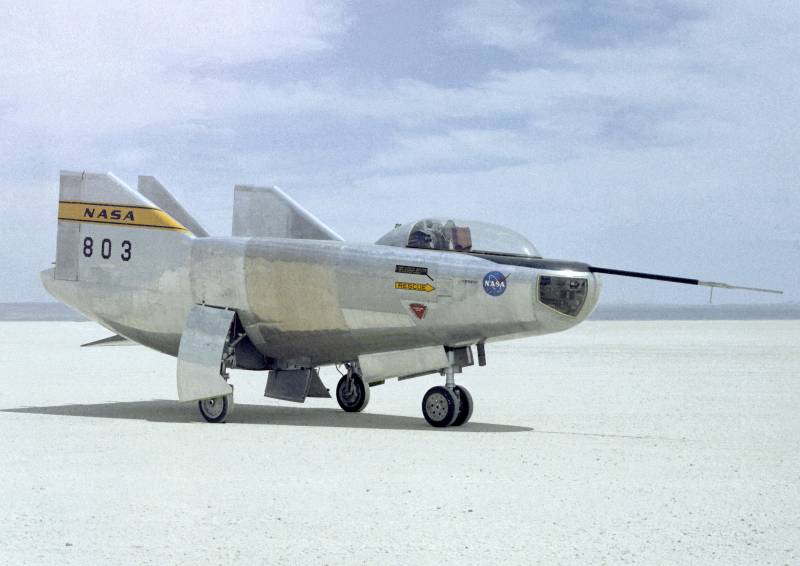
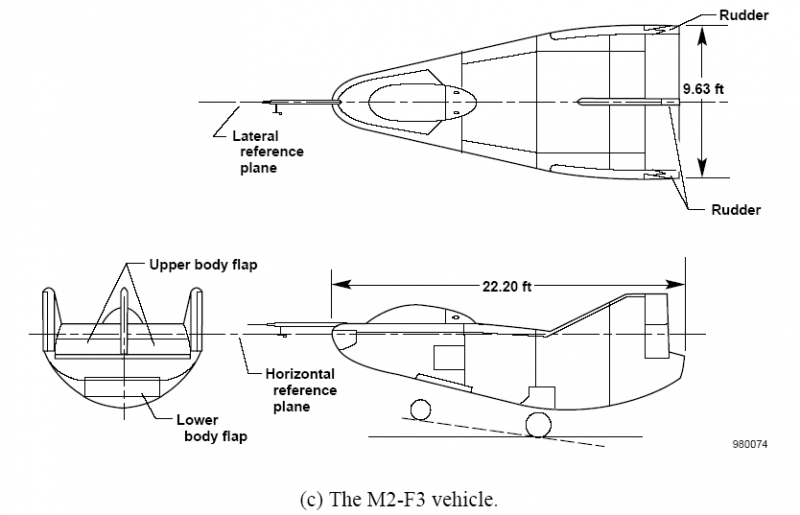
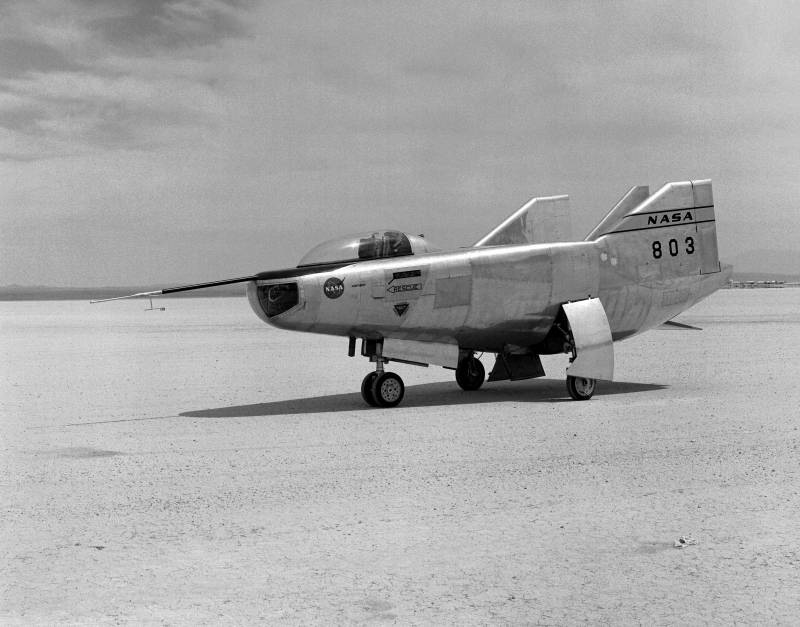
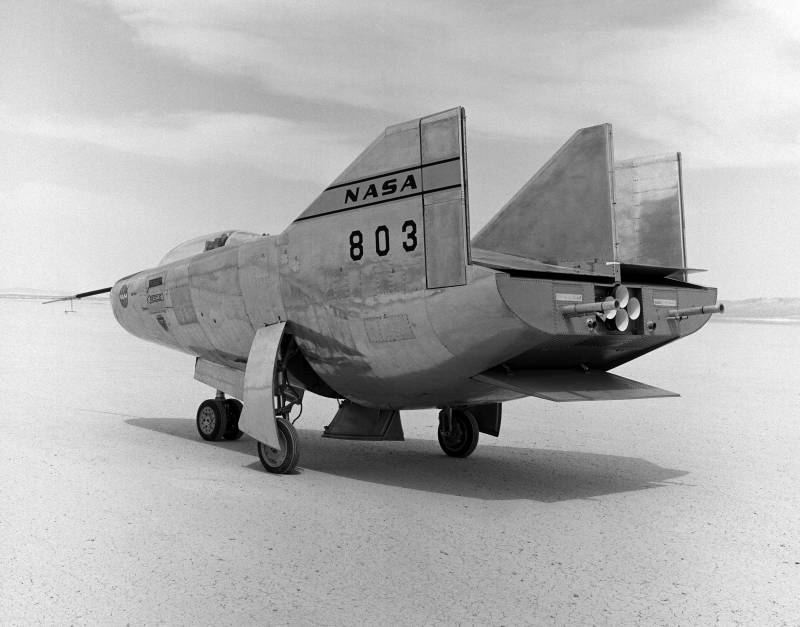
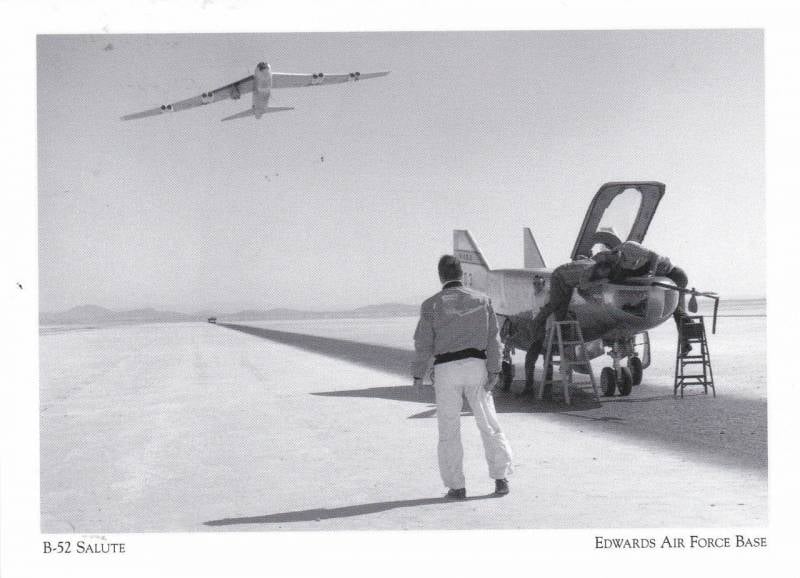
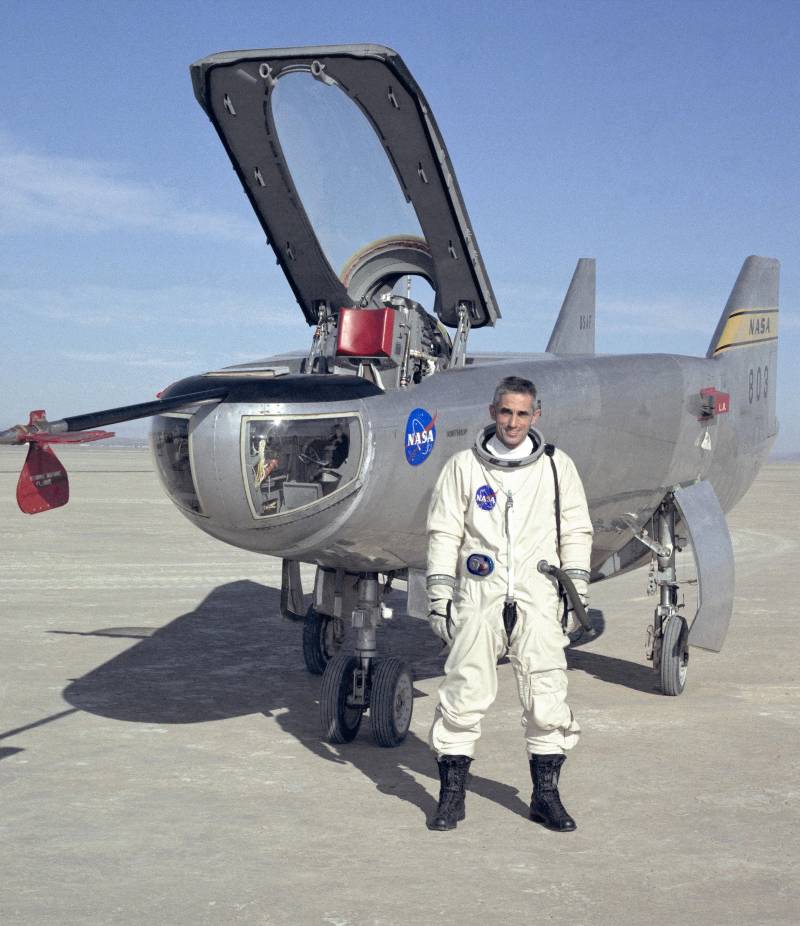
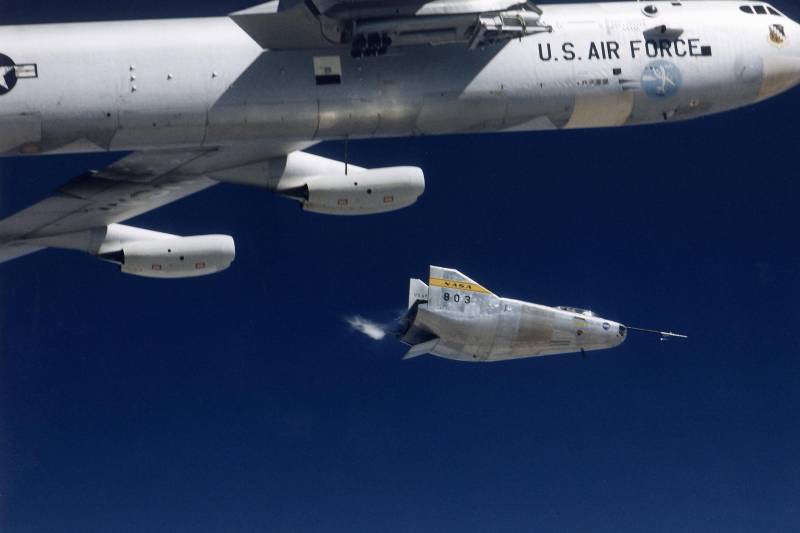
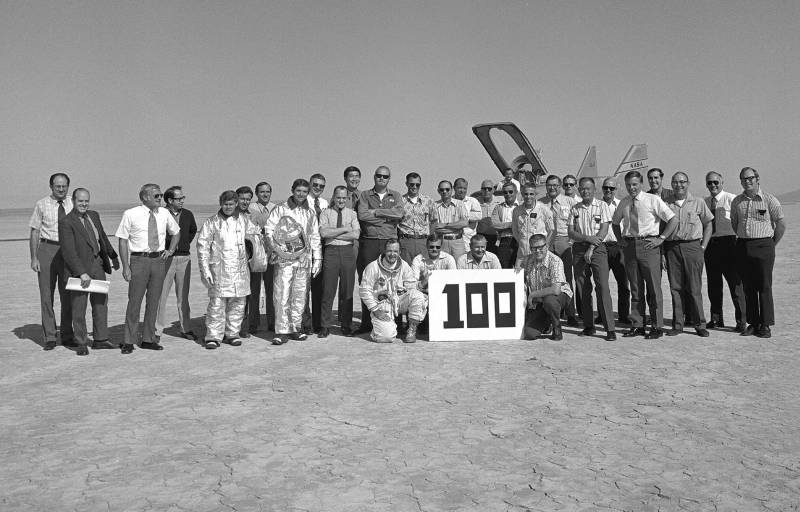
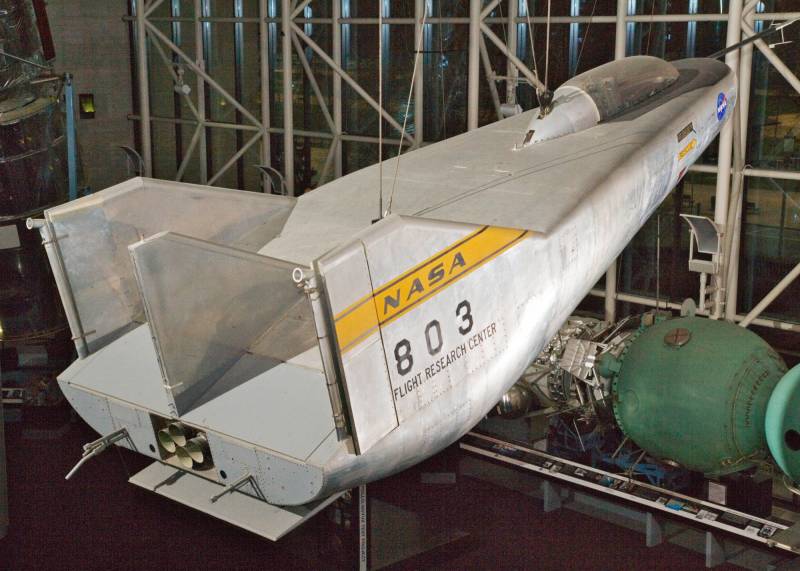
Information